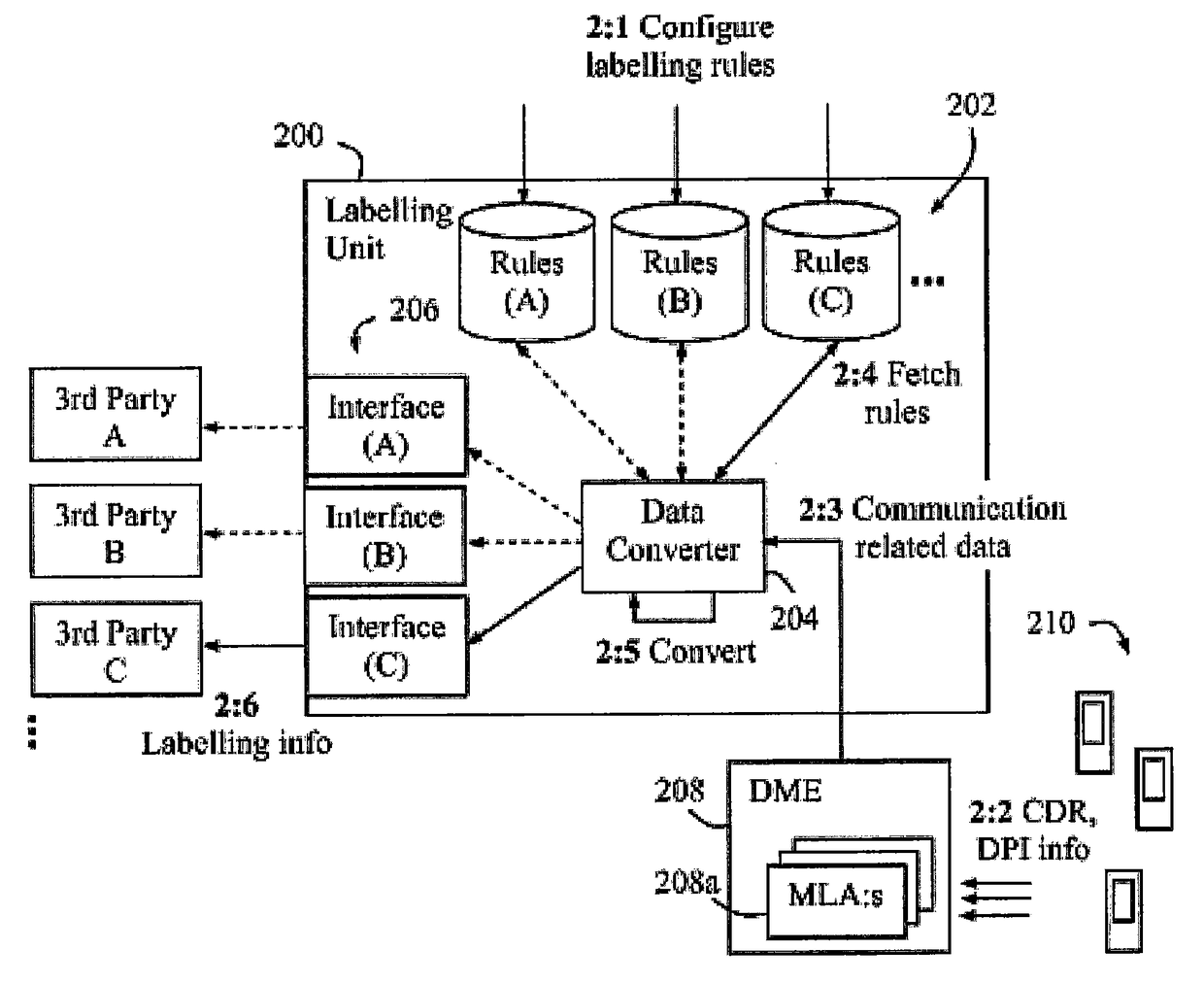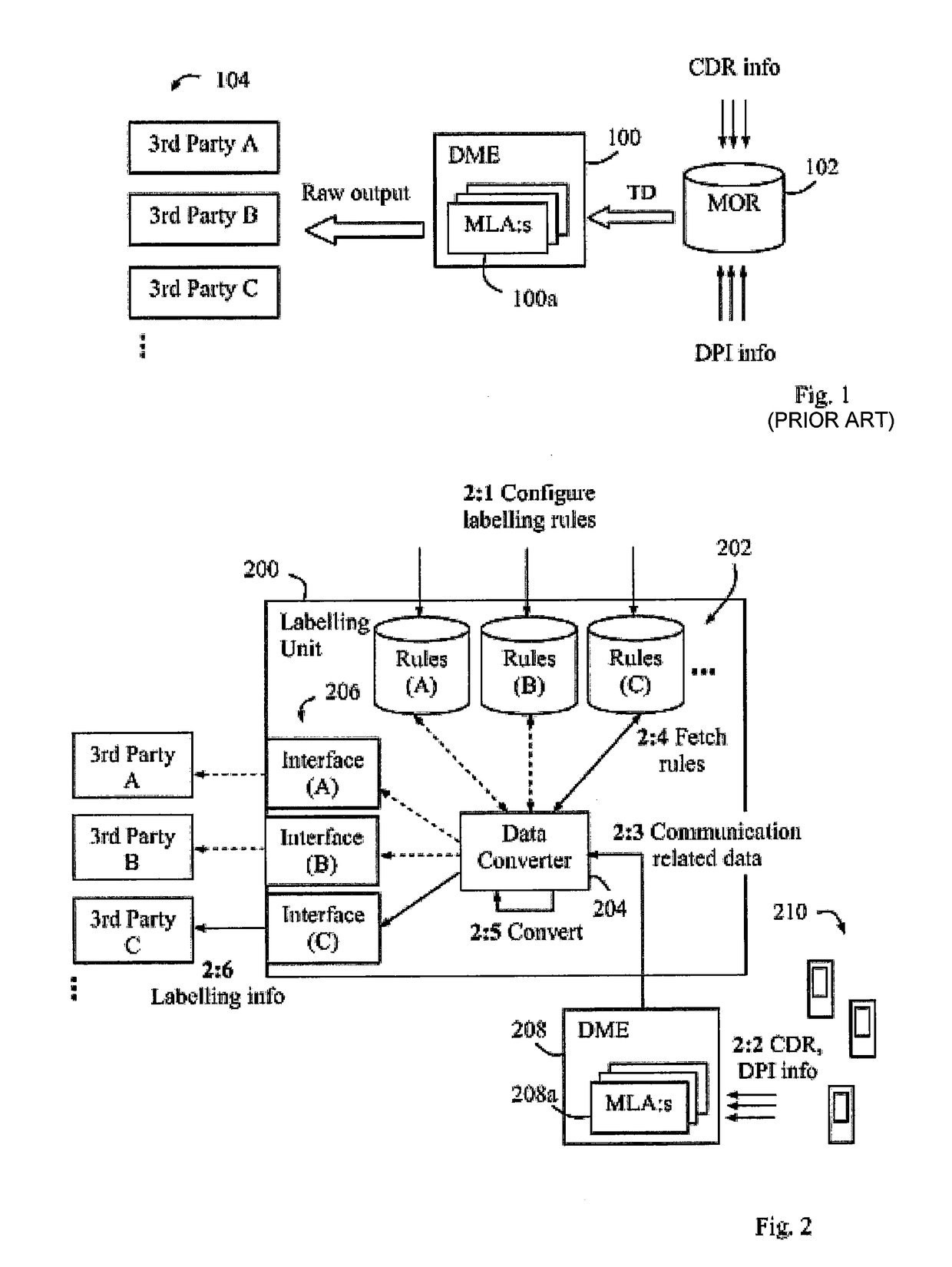Method and arrangement in a communication network
a communication network and communication network technology, applied in the field of method and arrangement in a communication network, can solve the problems of not having a useful universal and consistent “language” defined and established to describe, /or not being properly understood at all, and /or being inaccurately interpreted. the effect of minimizing the need for data mining experts
- Summary
- Abstract
- Description
- Claims
- Application Information
AI Technical Summary
Benefits of technology
Problems solved by technology
Method used
Image
Examples
Embodiment Construction
[0030]In this description, the term “labelling information” is used to represent a behaviour description of terminal users that can be traced from their communication habits and service usage. Briefly described, the invention provides a solution that enables creation of labelling information for terminal users, for delivery to third parties in an intelligible format which has been individually adapted or customised for each receiving third party according to predefined labelling rules. In this solution, the labelling information can be regarded as “customised” for each receiving third party, even though it is also possible that more than one third party can receive the same type of labelling information.
[0031]The labelling information thus basically characterises the users in a comprehensible manner and could also be referred to as classification, categorisation, cataloguing or sorting of users as related to their communication habits and usage of communication services. In this des...
PUM
 Login to View More
Login to View More Abstract
Description
Claims
Application Information
 Login to View More
Login to View More - R&D
- Intellectual Property
- Life Sciences
- Materials
- Tech Scout
- Unparalleled Data Quality
- Higher Quality Content
- 60% Fewer Hallucinations
Browse by: Latest US Patents, China's latest patents, Technical Efficacy Thesaurus, Application Domain, Technology Topic, Popular Technical Reports.
© 2025 PatSnap. All rights reserved.Legal|Privacy policy|Modern Slavery Act Transparency Statement|Sitemap|About US| Contact US: help@patsnap.com



